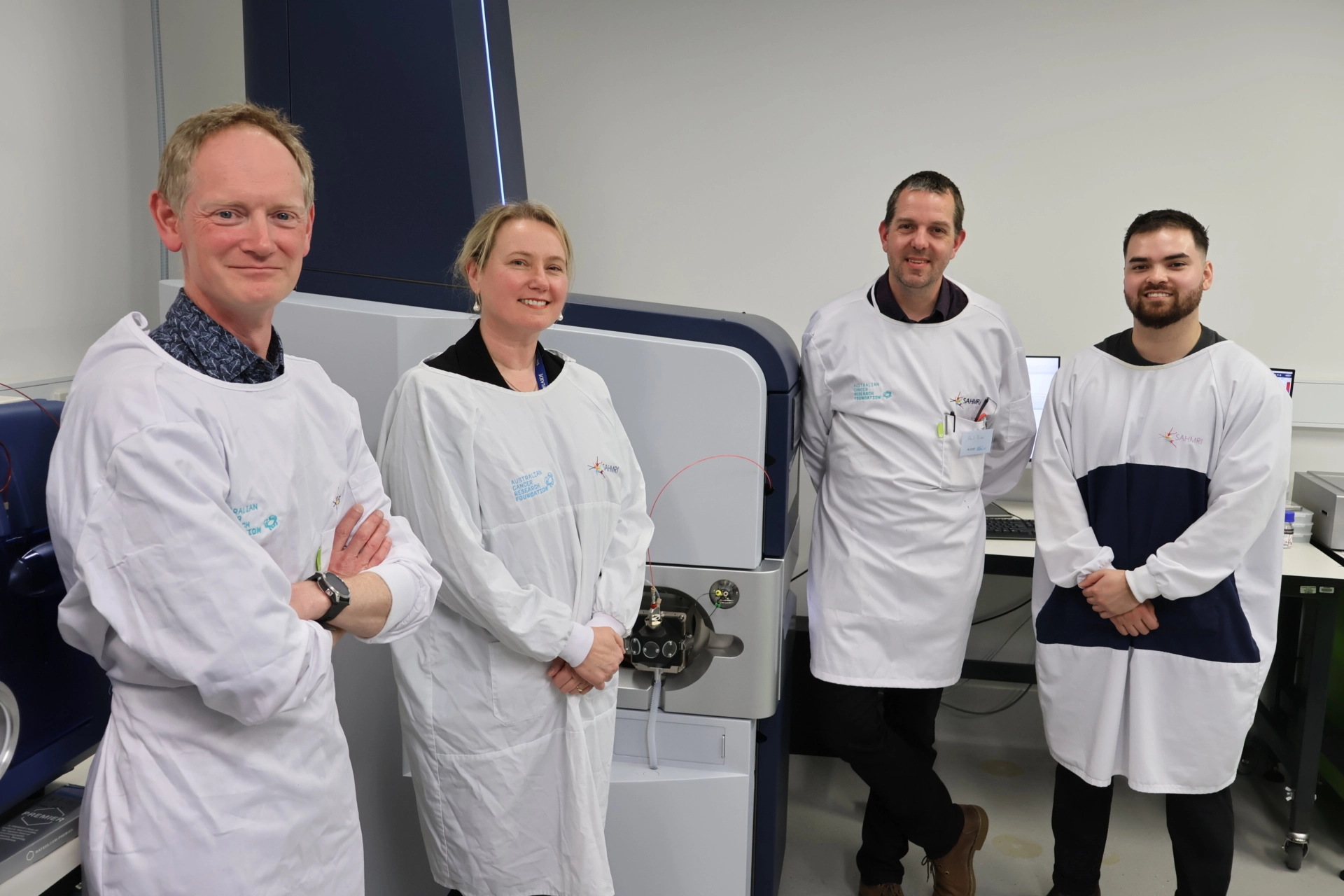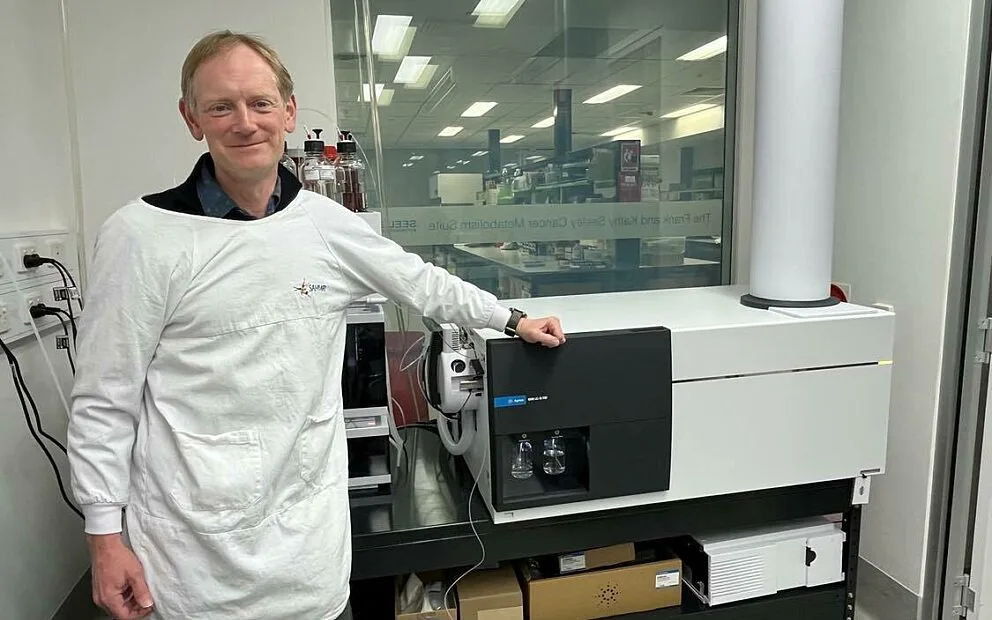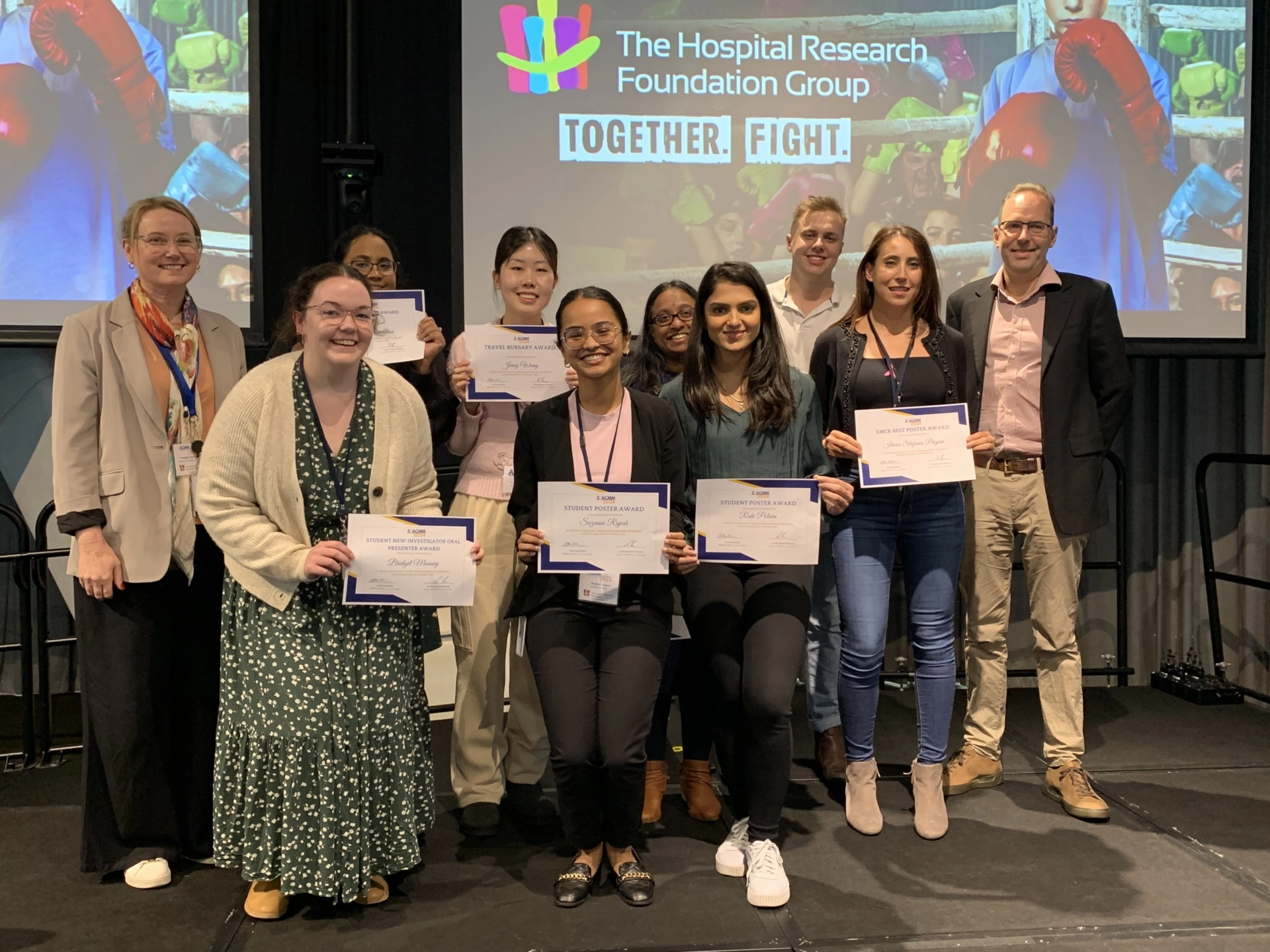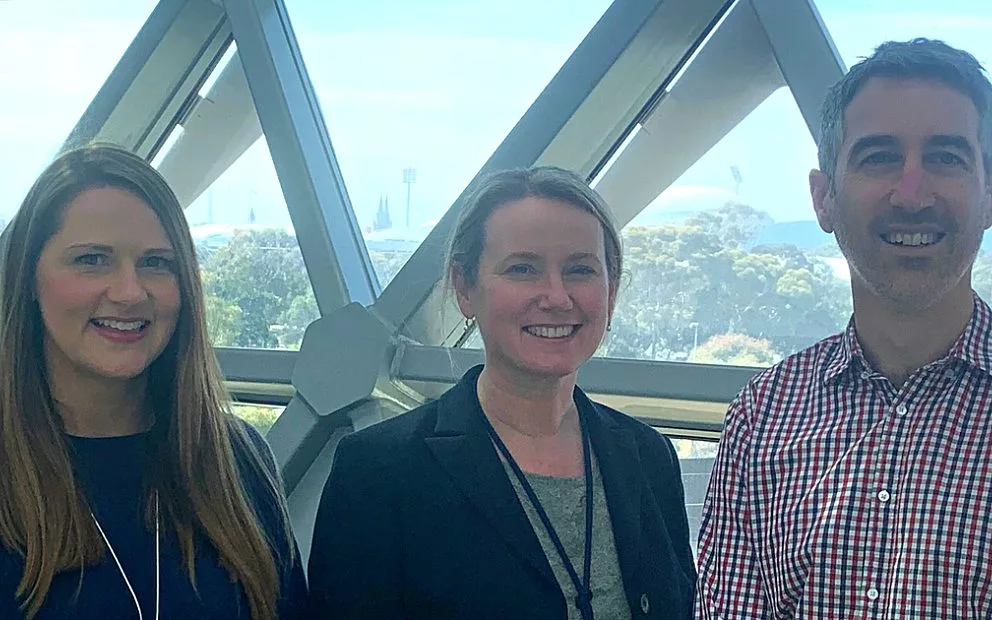When biochemist, Professor Lisa Butler, first heard about mass spectrometry imaging during a presentation by a SAHMRI colleague she’d never met, she had no idea it was the start of a game-changing collaboration that would revolutionise her prostate cancer research.
The presenter that day in 2014 was Associate Professor Marten Snel, Head of Proteomics, Metabolomics and MS Imaging. Marten’s specialty is using cutting edge technology to give scientists an incredibly detailed picture of what their tissue samples are made of, right down to individual molecules.
“It was quite a funny one, Lisa said, “I don’t even remember why exactly, but I found myself in this talk that Marten was giving about using mass spectrometry to image lipids and it was a real lightbulb moment – I realised this was exactly what I needed to accelerate my work.”
Lisa approached Marten after that talk with an idea; he then introduced her to his workmate Dr Paul Trim, and the rest is history.
“We’ve been helping Lisa’s team, and they’ve been helping us just as much,” Marten said.
“Their curiosity drives us to push the boundaries of what mass spectrometry can do, to the point where we’re now recognised as leaders not just in Australia but internationally.”
In recent years, Lisa, Marten and Paul have all become mentors to PhD student Jacob Truong, who recently identified a disease signal in tumour samples that could lead to predicting which patients will go on to relapse, even after years in remission.
“By comparing tumour samples from prostate cancer patients who’ve gone on to experience metastatic relapse, I discovered they all share a lipid signature, that those who’re able to avoid relapse don’t have,” Jacob said.
“I only found this lipid signature because I’ve got all these tools at my disposal, and my mentors have conditioned me to analyse samples in extreme detail.”
Applying this technology to biomedical research has opened numerous new avenues of exploration. The collaboration has been bolstered even further since the formation of the South Australian Genomic Centre (SAGC) at SAHMRI in 2020. Collaborating with SAGC Director, Professor David Lynn, has spearheaded the analysis of the massive amount of complex data generated from mass spectrometry imaging.
“Getting the most out of these studies requires specialised input from all of our teams and being able to discuss things face-to-face whenever it’s needed speeds everything up so much,” Marten said.
“I’d estimate that having all of this expertise and technology in the same place has halved the time we’ve needed to spend on this project, while significantly improving the quality of the research also.”
Jacob credits the opportunity to hone his biochemistry skills while simultaneously learning to master mass spectrometry, all in the one lab, for expanding his development throughout his PhD.
“Being able to talk to Lisa about clinical applications and study design, and then immediately consult with Marten and Paul about the data and technology we’re using, has been invaluable,” he said.
“The way we work at SAHMRI has shaped me as a scientist. I couldn’t have had this experience anywhere else.”
The impact of the team’s work is gaining attention internationally, with researchers from around the world now collaborating with the team to build on these findings.





